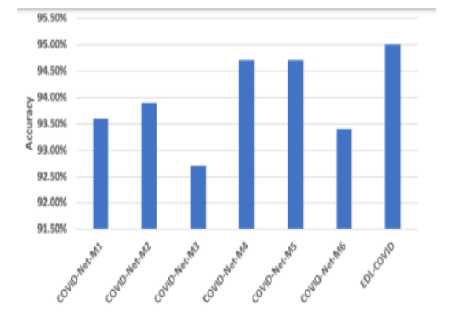


Indian Journal of Science and Technology
DOI: 10.17485/IJST/v17i18.2220
Year: 2024, Volume: 17, Issue: 18, Pages: 1898-1905
Original Article
R Ashok Kumar1*, Shaheda Akthar2
1Lecturer in Computer Science, SCIM Government College(A), Tanuku, West Godavari, AP, India
2Research Supervisor, Dept. of CSE, Acharya Nagarjuna University, Guntur, AP, India
*Corresponding Author
Email: [email protected]
Received Date:18 November 2022, Accepted Date:02 April 2024, Published Date:03 May 2024
Objectives: The objective of this research is to enhance accuracy on the COVID-19 case identification using X-ray imagery by addressing the drawbacks of utilising a single deep learning model, such as overfitting, high variance, and generalisation errors, by generating predictions with numerous frameworks as opposed to one model. Methods: In this study, secondary data sets from a group of experts from Qatar University in Doha, Qatar, and the University of Dhaka in Bangladesh, together with partners from Pakistan and Malaysia, have produced a dataset of 21,135 CXR pictures for COVID-19 patients, as well as pictures of normal and viral pneumonia. The performance of proposed strategy is, EnDL-COVID-19 is compared with three parameters Accuracy, Sensitivity, PPV Assessment. Findings: ENDL-COVID-19 gives good results for COVID-19, instances identification with a performance of 95%, higher than COVID-Net at 93.3%, are according to research observations ENDL-COVID-19 outperformed by a significant margin in a series of experiments using QU&UD test data consisting of 1592 CXR images. It was able to achieve a sensitivity of 96% and a PPV of 94.1% in determining whether or not COVID-19 occurrences were present. Novelty: The proposed weighted averaging ensemble technique, which is aware of the various sensitivities of deep-learning frameworks on various category types, is used to combine multiple snapshot frameworks of COVIDNet, which made a breakthrough in an open sourced COVID-19 case identification approach using chest X-ray pictures analyzed by deep neural networks.
Keywords: COVID-19, Ensembling Learning, Deep-Learning, EnDL-COVID-19, X-Ray Pictures
© 2024 Kumar & Akthar. This is an open-access article distributed under the terms of the Creative Commons Attribution License, which permits unrestricted use, distribution, and reproduction in any medium, provided the original author and source are credited. Published By Indian Society for Education and Environment (iSee)
Subscribe now for latest articles and news.